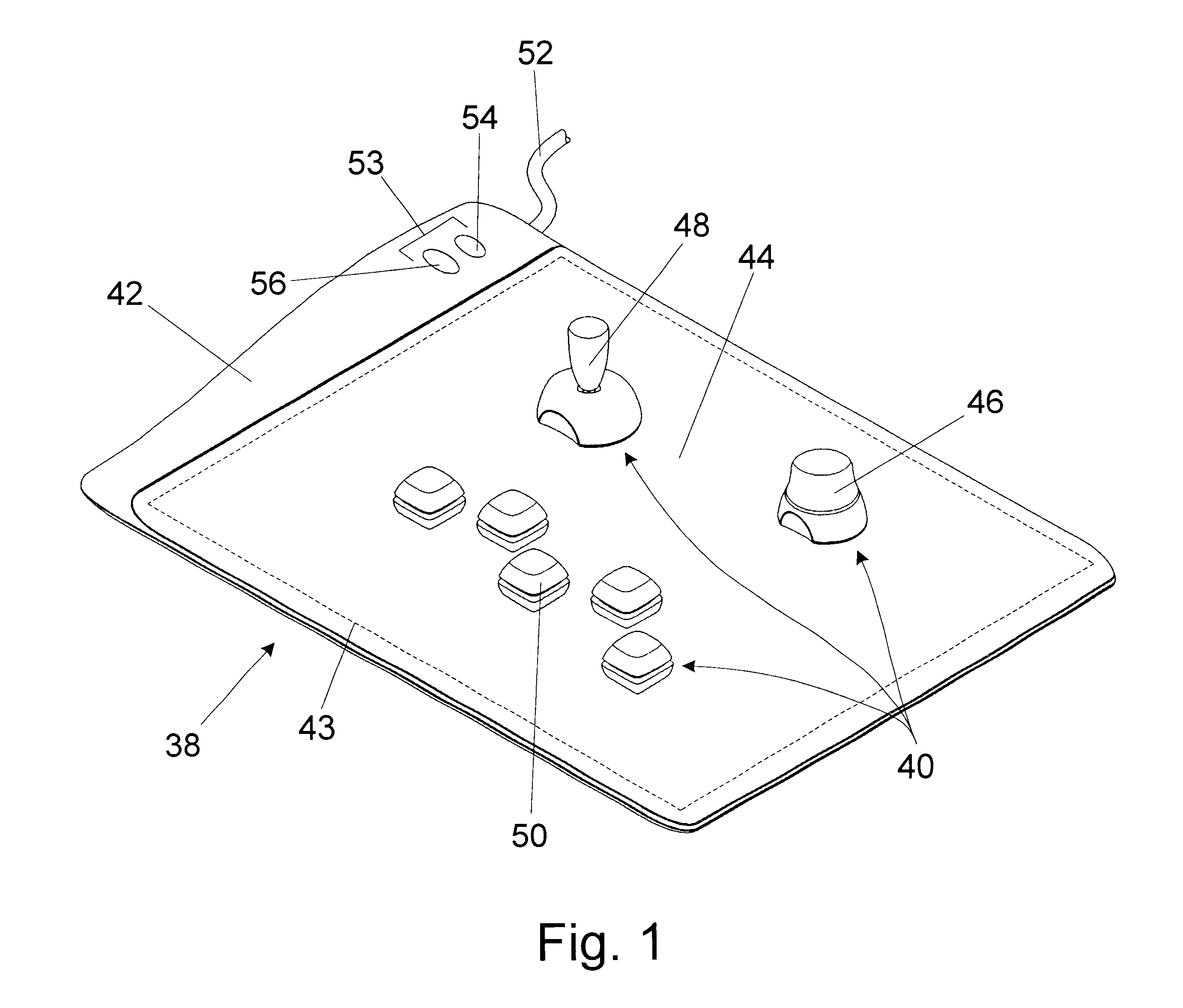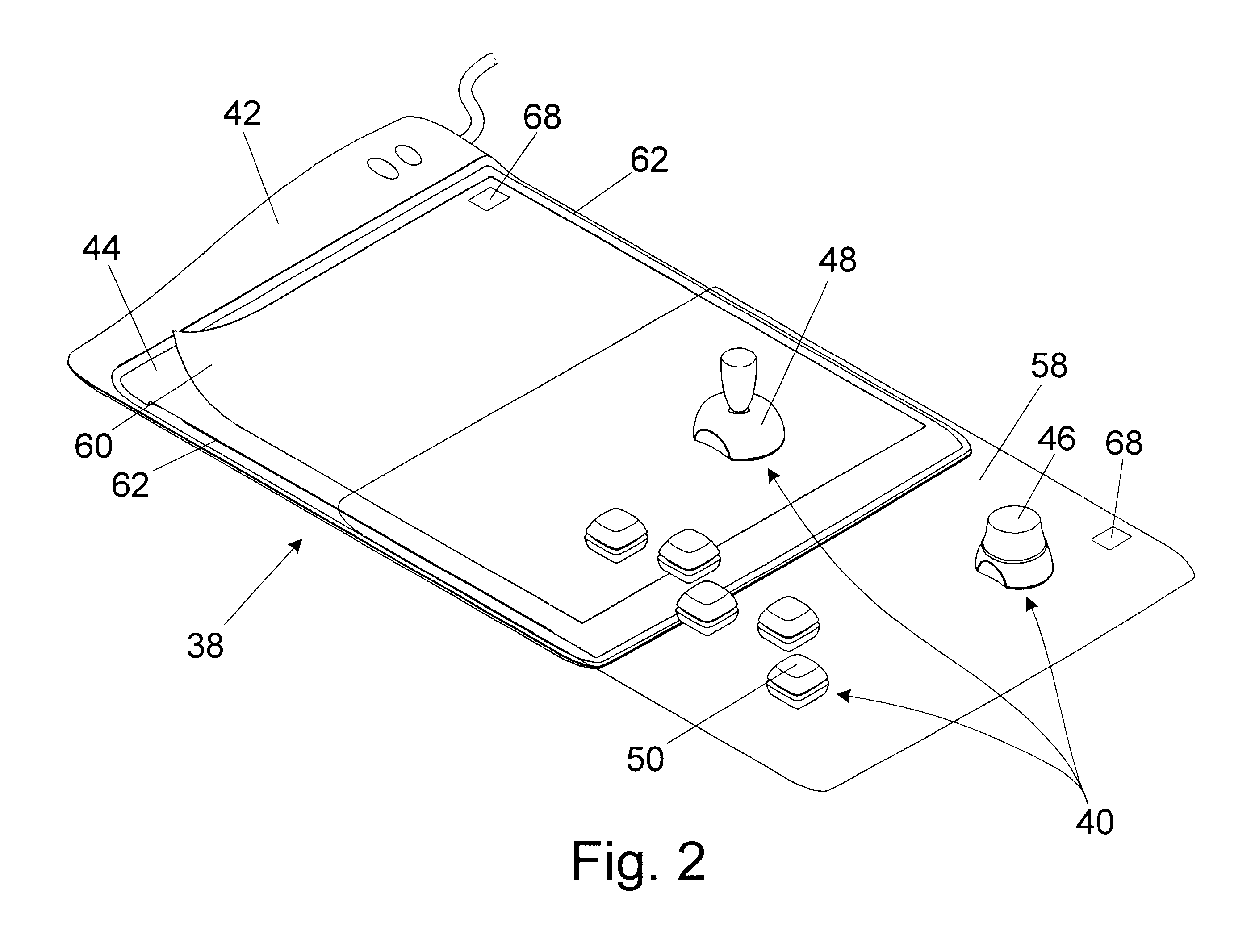Computer input device with individually positionable and programmable input members
a computer input and input member technology, applied in the field of computer input devices, can solve the problems of inability to keep up with the development of other aspects of computer technology, the location, quantity, and function of individual tactile mechanisms, and the inability to operate sliders with mouse-controlled cursors on computer screens, etc., to achieve the effect of facilitating accurate user input to applications
- Summary
- Abstract
- Description
- Claims
- Application Information
AI Technical Summary
Benefits of technology
Problems solved by technology
Method used
Image
Examples
Embodiment Construction
[0038]An embodiment of an input device according to the present invention includes a base. The base is operable to generate and detect a time-varying electromagnetic radio-frequency (RF) wave or carrier signal. At least one independently positionable input member is operatively positioned in the vicinity of the base and operable to modulate the carrier signal responsive to the identity and status of the input member.
[0039]An input device according to the present invention employs remotely-powered, passive, radio-frequency communication between the base and the input members. This type of system is well known and commonly used for Radio Frequency Identification (RFID) systems. A description of traditional RFID system design and operation may be found in “microID™ 13.56 MHz RFID System Design Guide” published by Microchip Technology, Inc.
[0040]As described below in greater detail, RFID tags may be employed in a number of elements of a device according to the present invention. The use...
PUM
 Login to View More
Login to View More Abstract
Description
Claims
Application Information
 Login to View More
Login to View More - R&D
- Intellectual Property
- Life Sciences
- Materials
- Tech Scout
- Unparalleled Data Quality
- Higher Quality Content
- 60% Fewer Hallucinations
Browse by: Latest US Patents, China's latest patents, Technical Efficacy Thesaurus, Application Domain, Technology Topic, Popular Technical Reports.
© 2025 PatSnap. All rights reserved.Legal|Privacy policy|Modern Slavery Act Transparency Statement|Sitemap|About US| Contact US: help@patsnap.com



